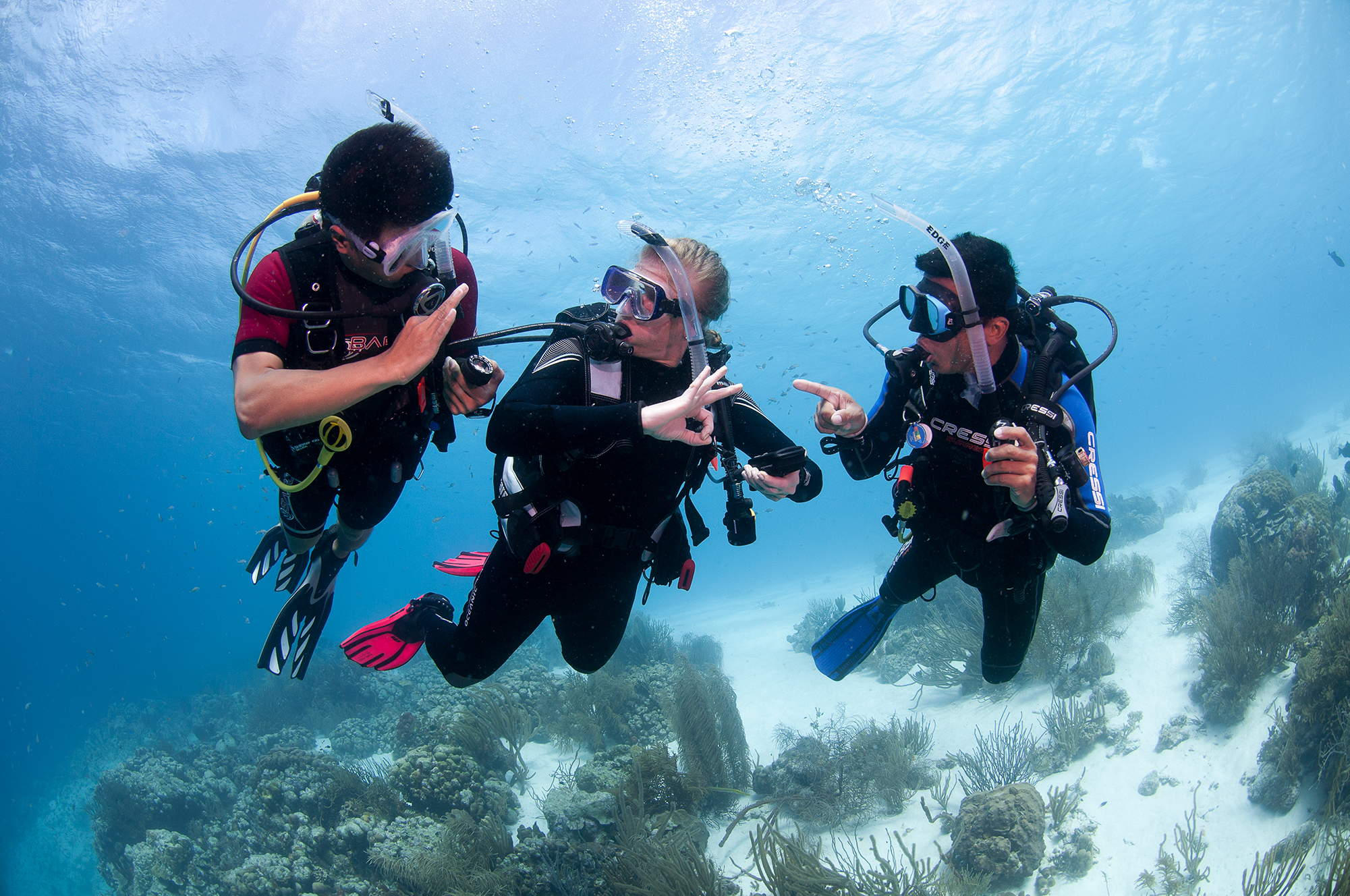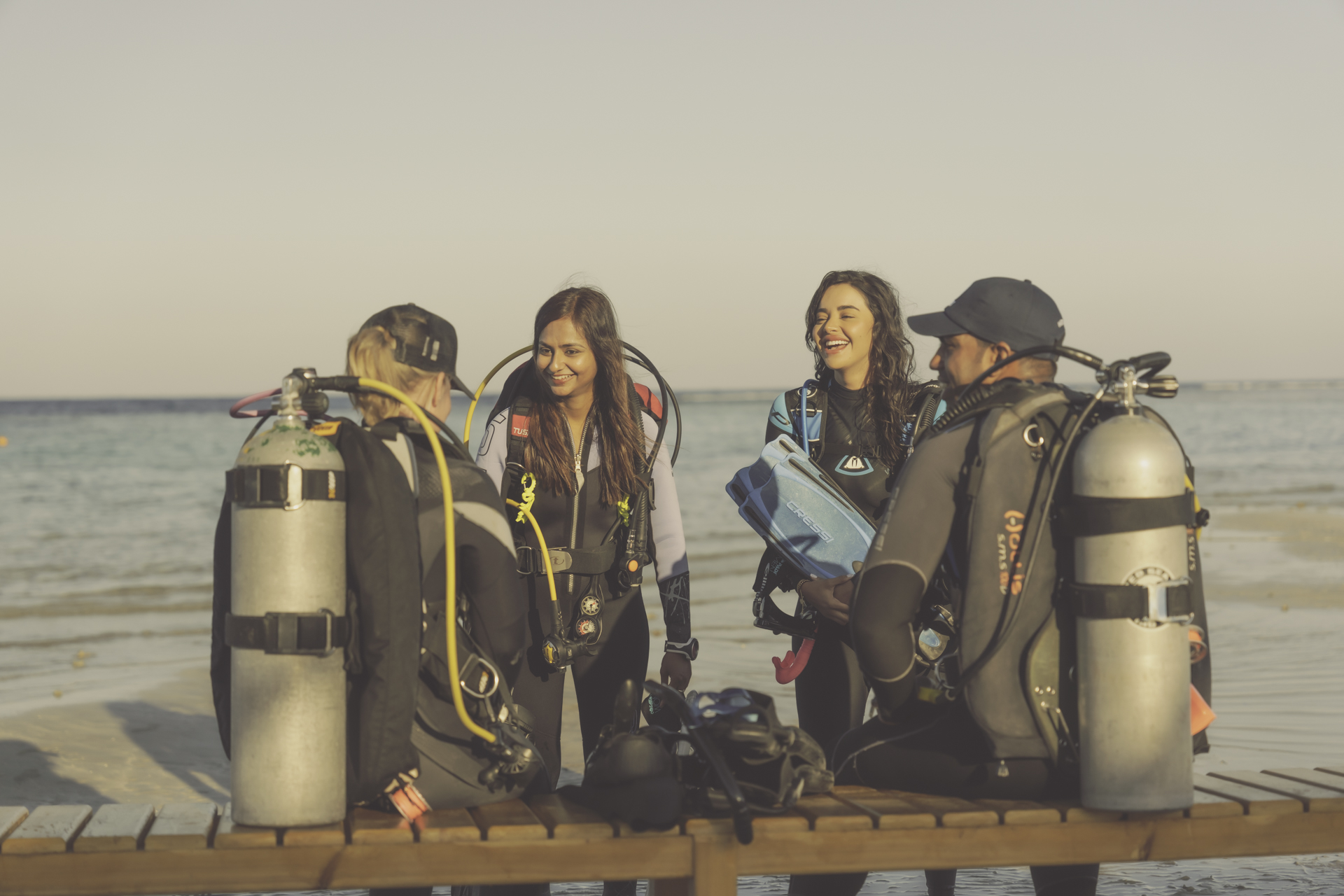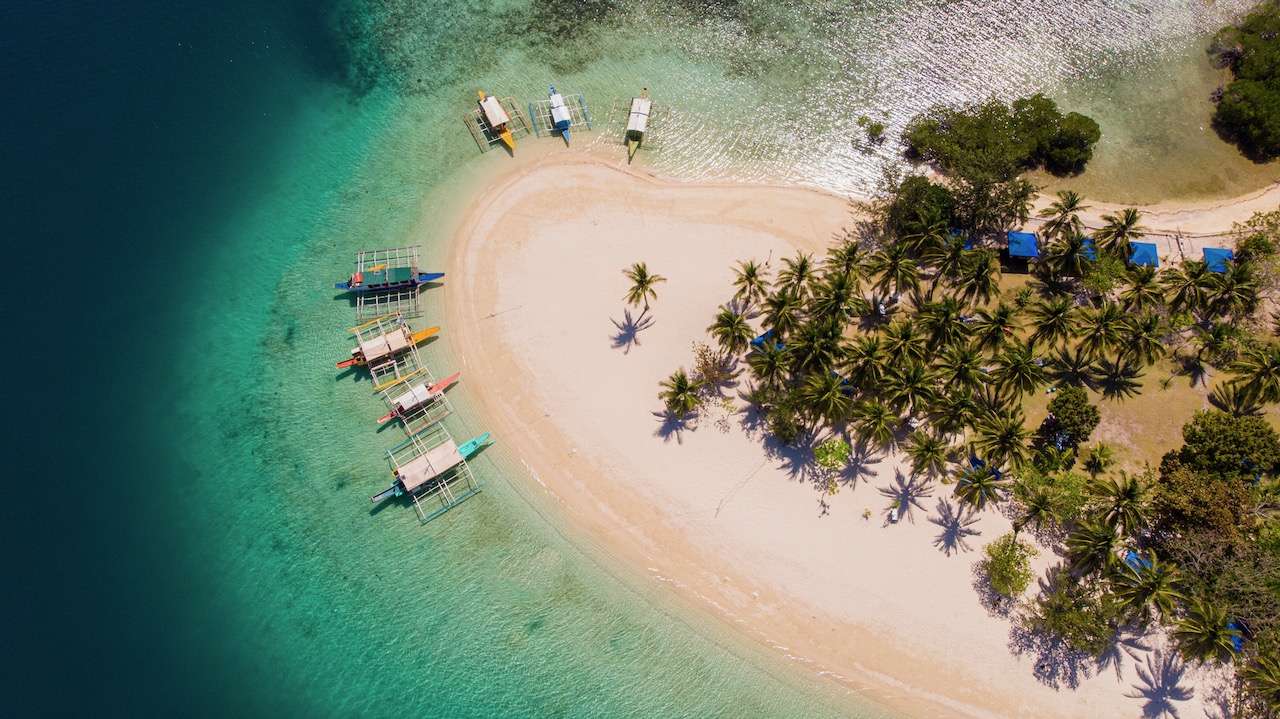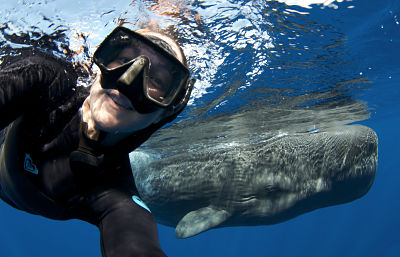So, you’ve just learned to dive. Congratulations! Completing the PADI Open Water Diver course is the first step to a lifetime of adventure, but once you’ve finished the course, you probably aren’t ready to jump into every single dive site around the world quite yet. You’ll need to take your time building your confidence as a diver before attempting the crazy currents of Komodo or black water diving in Hawaii.
As a new diver, it’s important to know that taking the time to get comfortable in the water is an important step to becoming a more experienced diver. Just like any new hobby, the more you practice, the better you’ll be. So, here are some tips for finding low-stress dive sites or diving destinations as you look to build confidence in your fins.

Questions to Ask for a Low-Stress Dive
For the divers who prefer low-stress diving, here are a few questions to ask when choosing your next dive location:
- Are you comfortable with the entry and exit techniques at the dive site? Getting used to the various entry and exit techniques takes experience. A descent line and a flat spot at the bottom are helpful if you need to adjust your gear before you start swimming.
- Is a dive professional available at this site to be your companion and guide? PADI professionals are trained to help other divers. They can help you assemble your gear and ensure you’re following safe diving practices.
- Is there a strong current? Diving in a current is similar to walking up a steep hill, except it is harder to evaluate the pitch of the incline. If you underestimate the strength of the current, you’ll have to swim harder to get back to the boat. Not only is this exhausting, but it’s also a way to deplete your air supply faster than you realize. Check out the PADI Drift Diver course to become comfortable with drift dives.
- How is the visibility and water temperature? Water temperature and visibility play an important part in low-stress diving. Oone of the main components of a low-stress dive is the ability to see where you’re going, the marine life, the dive boat, and your buddy. If low-stress diving is your thing, get used to asking, “How’s the viz?”

Easy Dive Types
Once you know the answers to the above questions, you can identify some dive types that tend to be easier for new divers than others. These include:
- Shore dives: Taking your time as you walk in is a relaxing way to start your dive. However, you’ll need to ensure the shore has little to no wave action.
- Small Lake/Quarry diving: Small lake and quarry diving tends to be easy because it offers fewer waves, no currents and less pressure to see diversified marine life.
- Liveaboard diving: Most liveaboards have hands-on staff to help you in and out of the water and offer custom-made diving platforms for frequent dives. Just be sure to check the certification and experience requirements of the trip before booking.

Best Scuba Diving Destinations for Beginners
While most destinations will have sites that can accommodate beginners in a low-stress environment, some diving destinations are filled to the brim with ideal dive conditions for new divers. These include but are not limited to:
- Bonaire – The shore diving capital of the world is a diver’s paradise thanks to its vibrant reefs, easy entries and clear visibility.
- Philippines – Although there is a wide variety of dive sites in the Philippines, easily accessible coral reefs in shallow waters make for ideal, low-stress dives. Areas like Puerto Galera, Bohol and Moalboal all have great sites for beginners.
- Thailand – Traditionally one of the most popular destinations for learning to dive, Thai waters tend to be warm, clear and full of life – the best combination for low-stress dives.
- Egypt – The Red Sea is a vibrant body of water bursting with life. While there are dive sites here that require experience, the shallower reefs of Sharm or the shore diving in the south of the country are attractions beginners shouldn’t miss out on.
- Australia – A country surrounded by great diving, Australia and its Great Barrier Reef are on most bucket lists. Luckily, low-stress dive sites abound in the area, which has something for everyone.
Now that you know what to look for in a low-stress dive and some of the best diving destinations for beginners, you’re ready to proceed with planning your next dive. Check out PADI Travel to book your diving holiday or a local fun dive. If you still need some dive planning guidance, ask your local PADI Dive Shop about the PADI Discover Local Diving Orientation.
